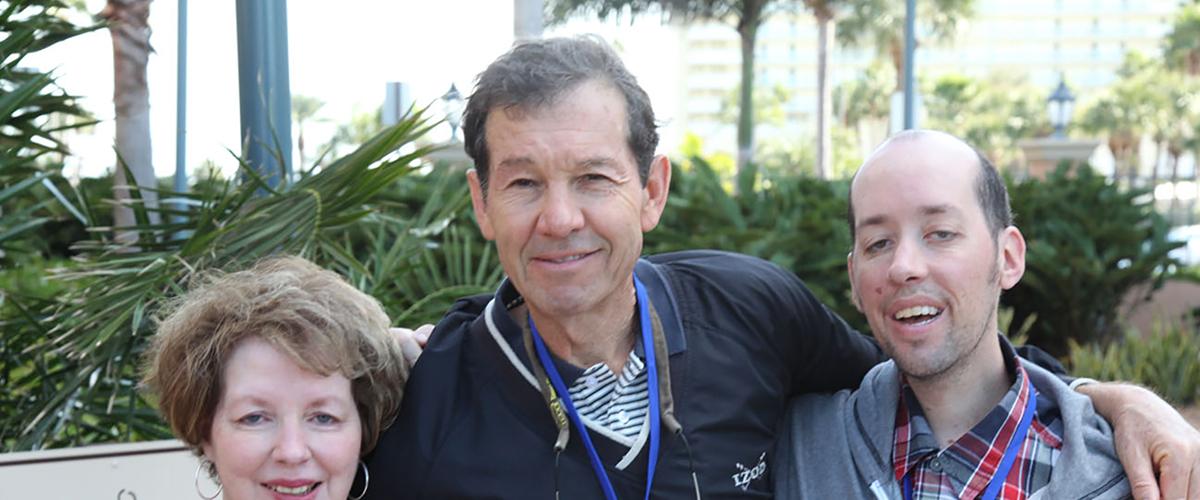An Ophthalmological Perspective on DM1
When considering the spectrum of organ system involvement in DM1, the list of ophthalmological considerations is usually short—cataracts being the major concern, but also ophthalmoplegia (including ptosis) and extraocular muscle myotonia (see MDF’s website for a review of ocular issues in DM). Some reports have suggested the co-occurrence of DM1 and Fuchs’ endothelial corneal dystrophy (FECD), a disease, like DM1, that is linked to an expanded CTG repeat (in TCF4 rather than DMPK) and MBNL sequestration along with expanded CUG RNA in nuclear foci. Identification of this pathophysiologic mechanism link between the two diseases suggests that the RNA gain-of-function in DMPK that produces DM1 may also put these patients at risk for FECD.
A Prospective Study of DM1 Patients for FECD
Due to the mechanistic similarities between DM1 and FECD—that both are RNA gain-of-function diseases resulting from MBNL sequestration by expanded trinucleotide repeats—Dr. Keith Baratz (Mayo Clinic) and colleagues prospectively evaluated 26 subjects from 14 DM1 families for phenotypic FECD and expanded repeats in DMPK and TCF4.
The research team identified five genotypically and phenotypically DM1 probands with phenotypic FECD (36%), a prevalence that greatly exceeded the prevalence of FECD in the at-risk age group in the general population (5%). Genotypic evaluation of samples available from 4 probands failed to show expanded CTG repeats in TCF4—thus each was phenotypically FECD without the normally associated genotype—but each had repeat expansions in DMPK. Co-segregation of DM1 and FECD was found in 12 additional family members; none of the affected individuals had expanded repeats in TCF4. Finally, RNASeq evaluation of RNA samples from the corneal epithelia of a FECD-affected and an unaffected subject confirmed target tissue expression of both DMPK and TCF4.
Monitor DM1 Patients for Development of FECD
These data suggest that DM1 patients are at risk for phenotypic FECD even though they lack the disease-causing expanded repeat in TCF4. Sequestration of MBNL and disruptions to alternative splicing patterns appear to be the commonality to the two diseases. Chromsomal location of the MBNL-sequestering pathogenic expanded repeat sequence then may not be essential in causation of either disease. The research group did not find an association between clinical/genetic traits of DM1 and the presence/severity of FECD—but they acknowledge that such analyses would likely require a considerably larger cohort. Finally, since TCF4 is broadly expressed (including a putative role in CNS development and linkage to the neurodevelopmental disorder, Pitt-Hopkins Syndrome), the converse might be true—that FECD patients are at risk for DM1—but there does not appear to be any available information addressing that hypothesis, perhaps due to tissue expression levels of TCF4.
Reference:
Fuchs' Endothelial Corneal Dystrophy in Patients With Myotonic Dystrophy, Type 1.
Winkler NS, Milone M, Martinez-Thompson JM, Raja H, Aleff RA, Patel SV, Fautsch MP, Wieben ED, Baratz KH.
Invest Ophthalmol Vis Sci. 2018 Jun 1;59(7):3053-3057. doi: 10.1167/iovs.17-23160.

